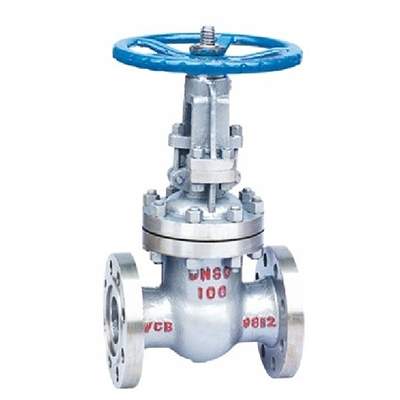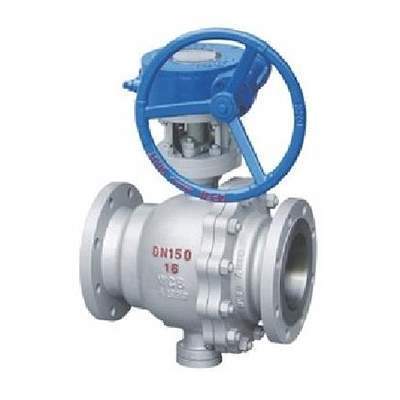Welcome to My Blog!
Before we dive into the content, if you’re interested in our products or have any questions, please feel free to visit our Contact Us page on the website. Our team is ready to assist you with inquiries, orders, or any support you may need.
Now, let’s get started on our journey together. I hope you find the content here insightful, engaging, and valuable.
When it comes to industrial pipelines and fluid control systems, selecting the right high pressure gate valve is critical. A well-chosen valve ensures reliable operation, safety, and efficiency, while a poorly selected one can lead to leakage, maintenance headaches, and costly downtime. This guide will help you understand high pressure gate valves, their specifications, applications, and best practices for installation and maintenance, enabling you to make an informed decision for your project.
Understanding High Pressure Gate Valves

What is a High Pressure Gate Valve?
A high pressure gate valve is a type of valve designed to control the flow of liquids or gases under high pressure conditions. Unlike other valves, it provides a straight-through, unobstructed flow path when fully open, minimizing pressure drop and energy loss. These valves are commonly used in industries such as oil and gas, power generation, chemical processing, and water treatment.
How Does a High Pressure Gate Valve Work?
High pressure gate valves operate by raising or lowering a gate (wedge) inside the valve body. When the gate is lifted, the valve opens, allowing fluid to pass freely. When the gate is lowered, it creates a tight seal that stops the flow completely. The precise engineering of the valve ensures it can withstand high pressure and prevent leakage.
Types of High Pressure Gate Valves
- Rising Stem vs Non-Rising Stem: Rising stem valves indicate the open or closed position by the stem movement, while non-rising stem valves rotate the stem internally.
- Full Bore vs Reduced Bore: Full bore valves allow fluid to flow through the valve with minimal restriction, whereas reduced bore valves slightly restrict the flow.
- Pressure Seal Bonnet Valves: These valves are designed for extremely high pressures and prevent leakage through the valve bonnet.
Key Specifications to Consider
Pressure Rating and Temperature Range
Selecting a valve with the correct pressure rating is essential. High pressure gate valves are typically rated for pressures ranging from 1500 psi to 2500 psi or more. Additionally, consider the temperature range of your system, as extreme temperatures may require special materials to maintain performance.
Valve Material Selection
Common materials include stainless steel, carbon steel, and alloy steel. The choice of material affects the valve’s resistance to corrosion, wear, and temperature, ensuring long-term reliability.
Valve Seat and Stem Materials
The valve seat and stem are critical for sealing performance. Materials like stainless steel, hardened alloys, or special coatings can enhance durability and prevent leakage, especially in corrosive or high-pressure environments.
Flow Characteristics and Valve Bore Size
Full bore valves provide unobstructed flow, ideal for pipelines where minimal pressure drop is required. Reduced bore valves may be suitable for smaller systems but can slightly affect flow efficiency.
Installation Guidelines
Step-by-Step Installation Process
Proper installation is essential for high pressure gate valves. Ensure the valve aligns correctly with the pipeline, tighten all bolts according to manufacturer specifications, and check that the stem operates smoothly.
Vertical vs Horizontal Pipeline Installation
High pressure gate valves can be installed in both vertical and horizontal pipelines. Ensure the valve type matches the orientation to prevent operational issues and premature wear.
Safety Precautions During Installation
Always follow safety protocols, including depressurizing the system before installation, using proper lifting equipment, and wearing personal protective gear.
Maintenance and Troubleshooting
Routine Maintenance Tips
Regular maintenance ensures optimal performance. Inspect valve stems, packing, and seats for wear, and lubricate moving parts as recommended by the manufacturer.
Common Issues and How to Solve Them
- Leakage: Often caused by worn seats or packing; replace or repair as necessary.
- Stem Jamming: Check alignment and lubrication; adjust or replace components.
- Corrosion: Select appropriate materials or coatings to resist chemical attack.
Repair and Replacement of Parts
High pressure gate valves allow replacement of internal components such as valve seats, stems, and packing without removing the entire valve in some designs, reducing downtime.
Industrial Applications
Oil and Gas Pipelines
High pressure gate valves are widely used in oil and gas pipelines, handling high-pressure crude oil, natural gas, and refined products.
High-Temperature Steam Systems
Valves designed for high temperature can control steam flow efficiently, maintaining safety and performance in power plants and industrial boilers.
Chemical and Corrosive Fluid Handling
Special materials and coatings make high pressure gate valves suitable for handling corrosive chemicals in industrial plants.
Water Treatment and Power Plants
These valves regulate water flow in treatment plants and cooling systems, ensuring operational efficiency and safety.
Choosing the Right Valve for Your System
Full Bore vs Reduced Bore Comparison
Consider system requirements: full bore valves are ideal for minimal flow resistance, while reduced bore valves may save cost for smaller systems.
Rising Stem vs Non-Rising Stem: Which to Use?
Rising stem valves provide a clear visual indication of valve position, suitable for manual operation. Non-rising stem valves save space and are ideal for automated systems.
Matching Valve Pressure Rating with System Requirements
Always select a valve rated above your system’s maximum operating pressure to ensure safety and longevity.
Considerations for Automated vs Manual Operation
Actuators can automate high pressure gate valves, reducing manual effort and enabling remote control. Manual valves are cost-effective and simpler but may require more maintenance in high-frequency operations.
Selecting a Reliable Manufacturer or Supplier
Top Factors When Evaluating Suppliers
Look for certifications, quality standards, and customer reviews. Timely delivery and after-sales support are also critical factors.
Popular Brands and Their Advantages
Well-known manufacturers provide consistent quality, reliable components, and technical support for industrial projects.
How to Verify Valve Quality Before Purchase
Check material certifications, pressure testing reports, and compliance with industry standards like API, ISO, or ANSI.
Cost Considerations and ROI

Factors Affecting High Pressure Gate Valve Prices
Material, size, pressure rating, and additional features influence the cost. High-quality valves may have higher upfront costs but lower maintenance expenses.
Long-Term Maintenance Costs vs Initial Investment
Investing in durable, well-engineered valves reduces downtime and repair costs over the valve’s lifespan.
Cost-Effective Choices Without Compromising Safety
Consider standard materials and designs suitable for your system while ensuring compliance with safety and performance requirements.
FAQ
What is a high pressure gate valve?
A high pressure gate valve is a type of valve designed to control fluid flow in pipelines under high-pressure conditions, providing a tight seal when closed and minimal flow resistance when open.
How does a high pressure gate valve work?
It works by lifting or lowering a gate inside the valve body. When the gate is raised, fluid flows freely; when lowered, the valve stops the flow completely.
Where are high pressure gate valves commonly used?
They are widely used in oil and gas pipelines, chemical plants, power generation, water treatment, and other industrial systems that handle high-pressure fluids.
How do I maintain a high pressure gate valve?
Regular maintenance includes inspecting and lubricating the valve stem, checking packing and seats for wear, and ensuring the valve operates smoothly to prevent leakage.
How do I choose the right high pressure gate valve?
Consider system pressure, temperature, material compatibility, valve type (rising vs non-rising stem), and bore size to select a valve that meets your project’s operational and safety requirements.
Need Help Choosing the Right High Pressure Gate Valve?
If you’re unsure which high pressure gate valve is best for your system or project, our experts are ready to assist. Contact us today for a personalized consultation and ensure your pipeline or industrial system operates safely and efficiently. Don’t wait until problems arise—get in touch now to optimize performance and protect your operations!
